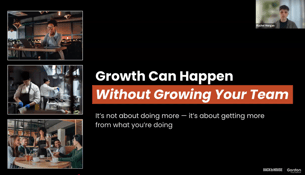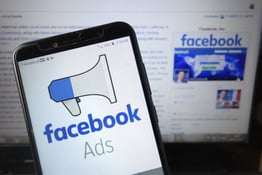At some point, email became a utility. Maybe it’s been the case since at least 1996. That’s when punk-activist-turned-Internet-pioneer Tom Jennings described it thus: “Email is boring, but good. It just works, like pencils.” Twenty-five years later, email still induces snores. It has become shorthand for white-collar drudge work, and been eclipsed in joy and immediacy by flashier social media-based direct messaging and at-your-fingertips accessibility of SMS. Think of it this way: When was the last time someone flirted with you by sliding into your inbox?
But don’t sleep on your friend, the humble email. Savvy restaurateurs know good oldish-fashioned email as an invaluable tool for growing their customer base, building guest loyalty, and spreading the word about special offers and new menu items. There’s an excellent chance that your POS has quietly been stashing them all along, and for good reason — email campaigns are restaurant marketing 101. You can even use email to steer customers to your restaurants’ social media marketing, where the fun is happening.
Of course, there’s no point in devising an ingenious email campaign if you have nobody to send it to. Here are six of the best ways to collect your guests’ email addresses by using the tools (tech-y and otherwise) you likely already have at your disposal.
Use a reservation system to generate an email list
If you aren’t already on the online reservation system bandwagon, now’s a good time to climb aboard. Virtually all reservation software asks the guest to enter an email address as part of the booking process. The guest gets a confirmation email containing the details of their reservation, and you get access to a trove of data that you can use to keep in touch with your customers and drive sales. Many of the most popular reservation apps allow business owners to export email address data into a spreadsheet you can import into your CRM software of choice. From there, it’s easy to build a database that lets you blast-email all your past customers, or to target it more carefully based on what else you know about those people (their birthdays or their dining preferences, for instance).
Use your existing in-house points of contact
So what about those guests who waltz in off the street, sans-res? Or those who prefer to book over the phone, providing nothing but their name and number in exchange for verbal confirmation from restaurant staff? If you prompt them, do they not reveal email accounts ripe for the listserv-ing? You’ll never know if you don’t provide other opportunities for them to hand it over. So think about the other ways your customers interact with your restaurant digitally. Has your menu gone touchless in the wake of the pandemic? Have that QR code lead first to a landing page that invites guests to sign up for your restaurant’s newsletter. Want to score addresses while highlighting your commitment to reducing waste? Encourage guests to opt for an email receipt at the POS.
Collect contact info via your Wi-Fi network
You can’t get something for nothing in this world, and “free” internet access is no exception. If you’ve ever tried to use the Wi-Fi at a large chain restaurant or retailer, you’re familiar with the notion of a splash page promising on-site web access in exchange for a few personal details (typically, your name and email address), the provision of which signifies assent to the terms and conditions. This is known as a “captive portal,” which you can think of as a way to capture the contact deets from your clientele before they wander onto the world wide web. Most ISPs make it easy for business owners to set up these data collection checkpoints, as well as to redirect Wi-Fi seekers to your business website landing page immediately after they furnish their details — a nice way to gently remind guests of the hand that feeds them (in the case of restaurants, both literally and figuratively).
Offer perks for subscribing to your email list
Desserts make great bribes. If someone is deciding whether to hand over their address, go ahead and tempt them with a 15% off coupon, a birthday promo, or a glass of wine on the house, especially if your newsletter is just starting out or you’re about to embark on a new email marketing campaign. You can advertise these perks across all your social media platforms, but QR codes are useful, here, too. It’s no secret that most guests are tooling around on their phones behind the closed doors of the powder room, so why not slap a scannable bumper sticker to the right of the mirror? If you already have a robust email base, spice up your next newsletter with the introduction of a referral program. Include a link that patrons can forward to a friend, and offer coupons for both parties in exchange for new sign-ups that result.
Hold a business card raffle
This oldie-but-goodie does double duty as a low-effort means of collecting contact information, and as a subtle way to recon the local business landscape. It can be particularly effective when you’re just opening up shop, as it tells participants and passers-by that you’re not just here to make a quick buck — you’re invested in the community, and you’re interested in building rapport with other businesspeople. Chances are anyone who drops their card into a fishbowl knows a wide network of potential guests. You’ll want to get in good with the movers and shakers in town, while gathering ideas of potential clients for corporate catering (specialized promotional listserv, anyone?).
Simply ask
Sometimes, when you want something, it’s best to ask for it directly. Instruct your servers to mention your newsletter (highlighting associated perks!) while they deliver the bill. Include a reminder to sign up on the bottom of the customer copy of every paper check, with a memorable email address guests can “contact” to opt in, a (not-too-cumbersome!) URL to a landing page that prompts for email sign-ups, or (even better) that same QR code from the restroom. Should you find yourself with an abundance of golf pencils (Tom Jennings would be proud!), pass them out along with little paper cards guests can fill out and leave before they make their exit. Assuming you’ve provided a top-notch dining experience, your guests will be most inclined to fork over their details once they’ve had a taste of your product, so don’t let them leave without a nudge to do so.
[Photo by Brooke Cagle on Unsplash]





